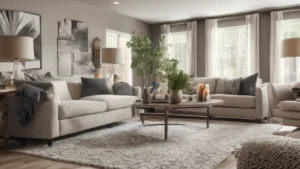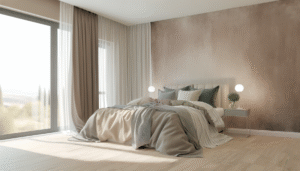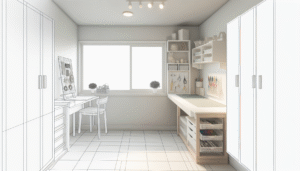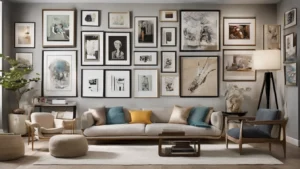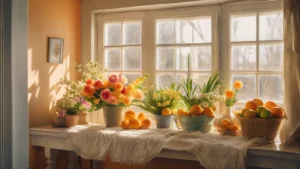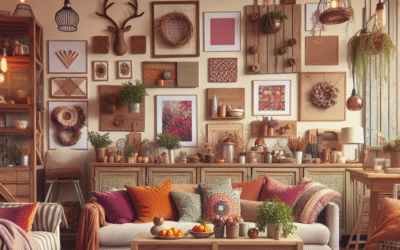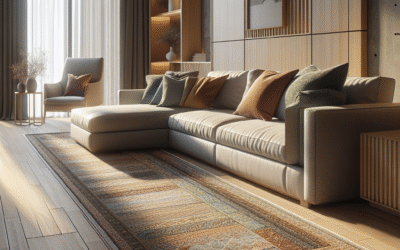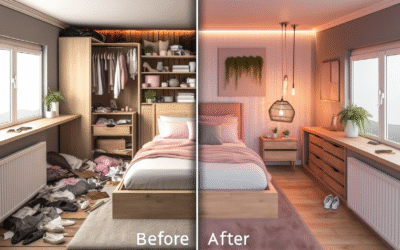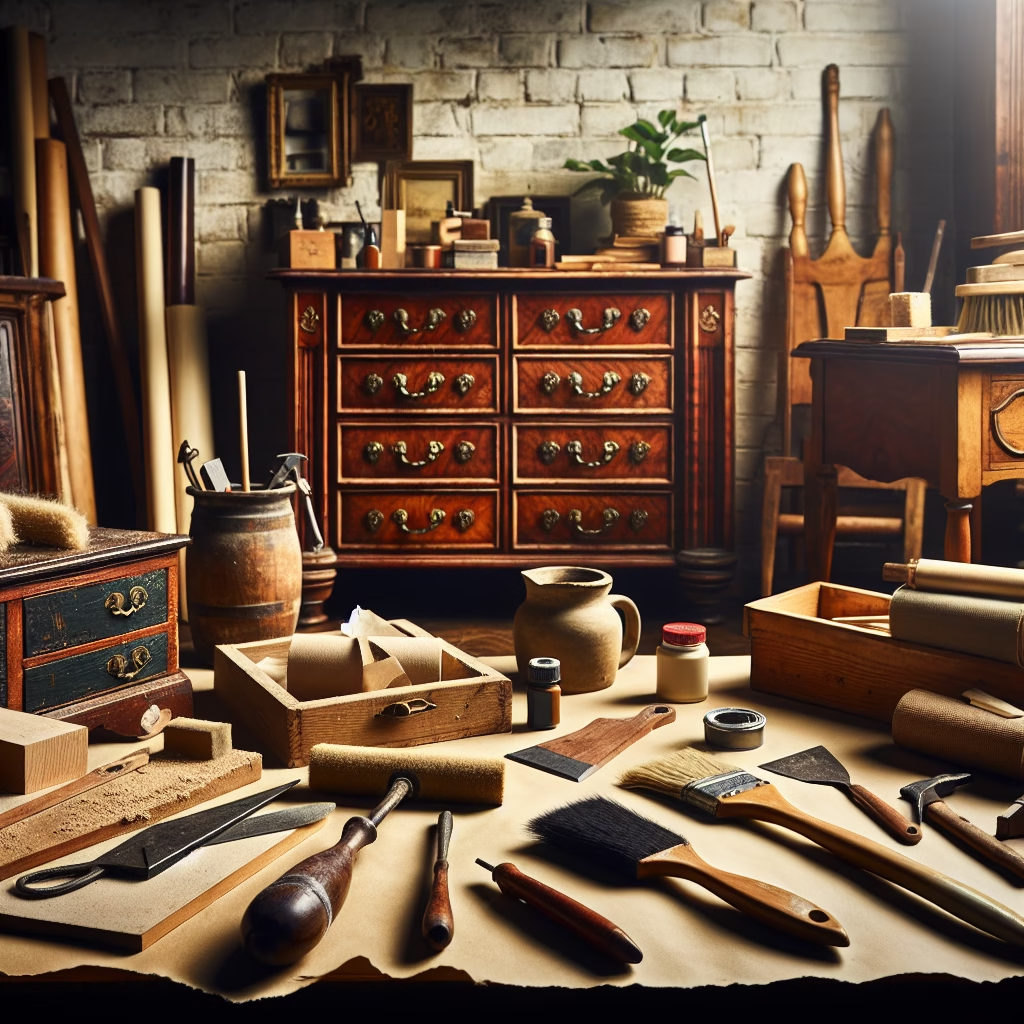
Got a dusty old chair tucked away in the attic? Or maybe you snagged a real treasure at a flea market? Vintage furniture has character, it has history, and honestly, it just looks cool. But let’s face it, sometimes it needs a little TLC. That’s why we will look at vintage furniture restoration tips. So, how do you breathe new life into these pieces without ruining their charm? Let’s get into it, shall we?
Why Bother Restoring Vintage Furniture?
Well, several reasons, to be honest. First off, it’s sustainable. Instead of buying new, you’re giving something old a new purpose. Think of it as recycling, but way more stylish. Plus, you know what? Vintage furniture is often made with better materials and craftsmanship than a lot of modern stuff. It’s built to last—you just need to keep it going!
Assessing the Damage: What Are We Working With?
Before you even think about sandpaper, you need to figure out what you’re dealing with. Are we talking minor scratches, or is this a full-blown structural nightmare? Check for things like loose joints, water damage, or chipped veneer. It impacts the end finish.
Gathering Your Arsenal: Essential Restoration Tools
Okay, time to get your hands dirty. You’ll need a few basic tools and supplies to get started. It’s not rocket science; you can find most of this stuff at your local hardware store.
- Sandpaper: Various grits, from coarse to fine
- Wood cleaner: A gentle, pH-neutral cleaner
- Wood glue: For those wobbly joints
- Clamps: To hold everything in place while the glue dries
- Varnish or finish: To protect your work
- Brushes and rags: For applying cleaners and finishes
- Safety gear: Gloves, dust mask, and eye protection
Pro Tip: Don’t skimp on the quality of your materials. Good sandpaper and a decent varnish can make a world of difference. Trust me!
Cleaning: The First Step to a Fresh Start
You would not believe the dirt and grime that can accumulate on vintage furniture over the years. Honestly, sometimes you need a stiff drink just to contemplate it. Start with a gentle wood cleaner and a soft cloth. Avoid anything too harsh, as it could damage the finish.
Repairing Structural Issues: Making It Sturdy Again
Loose legs? Wobbly tabletop? Let’s fix it. More often than not, wood glue is your best friend. Apply a generous amount to the joints, clamp them together, and let it dry overnight.
Stripping the Old Finish: Starting From Scratch?
Sometimes, the old finish is just too far gone. Peeling, cracked, or just plain ugly? It might be time to strip it down to the bare wood. Be careful, though – this can be a messy and time-consuming process.
Sanding: Smooth Operator
Alright, you’ve stripped the old finish, or maybe you just have some minor scratches to deal with. Either way, sanding is crucial. Start with a coarser grit sandpaper to remove any imperfections, and then gradually move to finer grits to smooth everything out.
Staining: Adding Color and Character
Staining is where you can really customize your furniture. Want to match it to your existing decor? Or maybe you want to give it a completely different look? There are countless colors and types of stains to choose from, so go wild!
Finishing: The Final Flourish
You’ve cleaned, repaired, sanded, and stained. Now it’s time for the finishing touch – literally. A good varnish or finish will protect your hard work and give your furniture that beautiful, polished look.
Waxing: The Secret to a Lustrous Sheen
Want to take your finish to the next level? Consider waxing. A good furniture wax can add a beautiful sheen and help protect against scratches and moisture. Plus, it smells nice!
Upholstery: When Fabric Needs a Facelift
Sometimes, it’s not just the wood that needs attention. If your vintage furniture has fabric upholstery, it might be looking a little worse for wear as well. What do you consider?
Choosing the Right Fabric: A Matter of Taste (and Durability)
The material you choose really depends on your own style, of course, but the durability ought to be considered, too. Heavy upholstery for everyday use really beats an expensive fabric that stains too easily!
Pattern Matching: Making It Look Professional
If you’re using a patterned fabric, pattern matching is key. You would not like to see crooked stripes, would you?
Re-Stuffing: Adding Comfort and Support
While you’re at it, consider re-stuffing the cushions. Old stuffing can get lumpy and uncomfortable, so why not replace it with something new and supportive?
Adding Decorative Details: The Finishing Touches
Little details can really make a difference. Think about adding decorative tacks, buttons, or piping to give your upholstery a professional look.
Hardware: Don’t Forget the Knobs and Pulls
You will be surprised how much new hardware can impact the end finish. Sometimes they’re important.
Sourcing Vintage Hardware: A Treasure Hunt
Finding authentic vintage hardware can be a treasure hunt in itself, but it’s worth the effort. Flea markets, antique stores, and online marketplaces are great places to start your search.
Cleaning and Polishing: Making It Shine
Once you’ve found the perfect hardware, give it a good cleaning and polishing. Use a metal cleaner appropriate for the type of material, and buff it to a shine.
Replacing Missing Hardware: Matching the Style
If you can’t find exact replacements for missing hardware, try to find something that’s stylistically similar. You want it to blend in seamlessly with the rest of the piece.
Protecting Your Investment: Keeping It Looking Good for Years to Come
Congratulations! You’ve successfully restored your vintage furniture. Now, you need to protect it so all your hard work doesn’t go to waste.
Regular Cleaning: A Little Goes a Long Way
Just like your car or your house, your furniture needs regular cleaning. Dust it regularly with a soft cloth and clean up any spills immediately.
Avoiding Direct Sunlight: Fading Away
Sunlight can fade and damage wood finishes and fabrics. So, try to keep your furniture out of direct sunlight. Also consider window curtains.
Using Coasters and Placemats: Prevention Is Key
Water rings and heat damage are the enemy of vintage furniture. Always use coasters and placemats to protect surfaces from liquids and hot items.
Conditioning Wood: Keeping It Supple
Wood can dry out and crack over time, so it’s important to condition it regularly with a good furniture polish or oil.
Professional Help: When to Call in the Experts
Alright, let’s be real – sometimes, a project is just too big to tackle on your own. While DIY can be empowering (and cheaper), some jobs simply require professional expertise due to the level of skill, specialized equipment, or delicate nature of the piece at hand.
Assessing Your Limits: Knowing When to Step Aside
Here’s the thing, not every piece is a good candidate for a DIY restoration. If the furniture has significant structural damage, is extremely valuable, or requires specialized techniques you’re not comfortable with, it’s better to call a pro! It’s a tough call.
Finding the Right Restorer: Experience Matters
Not all furniture restorers are created equal. Look for someone with experience restoring vintage furniture. Ask for references. You’re putting your trust with expensive furniture so make sure they are worth it.
Understanding the Costs: Budget Accordingly
Professional restoration can be expensive, so it’s important to get a clear estimate up front. Make sure you understand what’s included in the price and whether there are any potential extra costs.
DIY vs. Professional: Balancing Cost and Quality
Here’s a pickle: weighing your options. The DIY approach can save some money and bring personal satisfaction, but sometimes, paying for professional restoration is a must to bring out the most value out of the furniture. Which way will you go?
Beyond Restoration: Upcycling and Refurbishing
Okay, so you’ve restored a few pieces of vintage furniture. Now what? Well, why stop there? Upcycling and refurbishing are other ways to give old furniture a new lease on life, and honestly, they can be a lot of fun. It really depends on the look you are going for.
Upcycling: Giving It a New Purpose
Upcycling is all about repurposing old furniture into something new and different. Think turning an old dresser into a kitchen island, or turning an old door into a headboard. The possibilities are endless!
Refurbishing: A Modern Twist
Refurbishing is similar to restoration, but with a modern twist. Instead of trying to restore the furniture to its original condition, you’re giving it a new look and feel that suits your current style.
Creative Ideas: Inspiration for Your Next Project
Need some inspiration? Check out Pinterest, Instagram, and home decor blogs for creative ideas on how to upcycle and refurbish vintage furniture. You might be surprised at what you find!
Selling Your Restored Furniture
So, you’ve restored a few pieces of vintage furniture, and they look amazing. Now what? If you’re not planning on keeping them all, you could sell them and make some money.
Online Marketplaces: Reaching a Wider Audience
Online classifieds and marketplaces like Craigslist, Facebook Marketplace, and Etsy are great places to sell your restored furniture. Reach a wider audience, and who knows?
Local Antique Shops: Consignment Options
If you don’t want to deal with the hassle of selling online, consider consigning your furniture at a local antique shop. Consignment shops will display your pieces, and take a percentage when the product is sold.
Pricing Strategies: What’s It Worth?
Pricing your restored furniture can be tricky. Consider the cost of materials, the amount of time you spent, and the overall condition of the piece. Also, do some research to see what similar items are selling for in your area.
Displaying Your Creations: Showcasing Your Skills
To sell quickly for the best price, showcase it properly! Good lighting and backgrounding can attract an interested buyer.
The Joy of Restoration: More Than Just Furniture
You know, restoring vintage furniture isn’t just about making old things look new again. It’s a way to connect with the past, preserve history, and create something beautiful and unique. Plus, it’s a whole lot of fun!
A Sustainable Hobby: Helping the Environment
In case you didn’t know, restoring and upcycling furniture is also a sustainable hobby. Instead of buying new, you’re giving old items a new life, which reduces waste and helps the environment.
A Rewarding Experience: A Sense of Accomplishment
If you do this, you will know the feeling of accomplishment. I can tell you, it is pretty great.
Getting Started: Taking the First Step.
So, are you ready to start your own furniture restoration adventure? With a little bit of knowledge, some basic tools, and a whole lot of enthusiasm, you can transform tired old pieces into treasures that will last for years to come. Good luck, and have fun!
External and Internal Links
For more insights into furniture restoration, consider these resources:
FAQ Section
Here are some frequently asked questions about vintage furniture restoration:
Disclaimer
Restoring vintage furniture can involve working with chemicals, power tools, and potentially hazardous materials. Always take appropriate safety precautions, and consult with a professional if you’re unsure about any part of the process. The information provided in this article is for general guidance only, and should not be considered a substitute for expert advice.
Categories
- Accent Walls & Ceilings (61)
- Art Curation & Gallery (62)
- Bedding Style Trends (68)
- Bedroom Makeover (81)
- Bohemian & Eclectic Styles (58)
- DIY & Budget-Friendly Decor (64)
- Eco-Friendly Design (62)
- Furniture Care (71)
- Home Decor & Design Ideas (162)
- Home Wellness Spaces (59)
- Integrated Outdoor Living (67)
- Japandi Style (61)
- Kids and Nursery Decor (59)
- Living Room Decor (79)
- Mix & Match Techniques (73)
- Modern & Contemporary Design (66)
- Rug Sizing & Placement (73)
- Scandinavian Design Inspiration (20)
- Seasonal Home Decor (79)
- Small Space Solutions (73)
- Wall Art & Painting Tips (77)
Recent Comments
Archives
Product Gallery
-
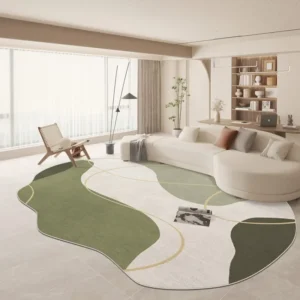 Large Area Green Rugs for Bedroom Nordic Living Room Decoration Shaped Carpet Irregular Plush Lounge Rug Home Thick Washable Mat
Rated 5.00 out of 5$55.01 – $346.86Price range: $55.01 through $346.86
Large Area Green Rugs for Bedroom Nordic Living Room Decoration Shaped Carpet Irregular Plush Lounge Rug Home Thick Washable Mat
Rated 5.00 out of 5$55.01 – $346.86Price range: $55.01 through $346.86 -
 Nordic Style Rugs for Bedroom Morandi Living Room Decoration Carpet Large Area Geometry Lounge Rug Home Cloakroom Non-slip Mat
Rated 5.00 out of 5$39.51 – $598.43Price range: $39.51 through $598.43
Nordic Style Rugs for Bedroom Morandi Living Room Decoration Carpet Large Area Geometry Lounge Rug Home Cloakroom Non-slip Mat
Rated 5.00 out of 5$39.51 – $598.43Price range: $39.51 through $598.43 -
 Irregular Shapes Living Room Decoration Carpet Modern Style Rugs for Bedroom Home Thicken Plush Rug Fluffy Soft Lounge Floor Mat
Rated 4.83 out of 5$55.91 – $347.82Price range: $55.91 through $347.82
Irregular Shapes Living Room Decoration Carpet Modern Style Rugs for Bedroom Home Thicken Plush Rug Fluffy Soft Lounge Floor Mat
Rated 4.83 out of 5$55.91 – $347.82Price range: $55.91 through $347.82

